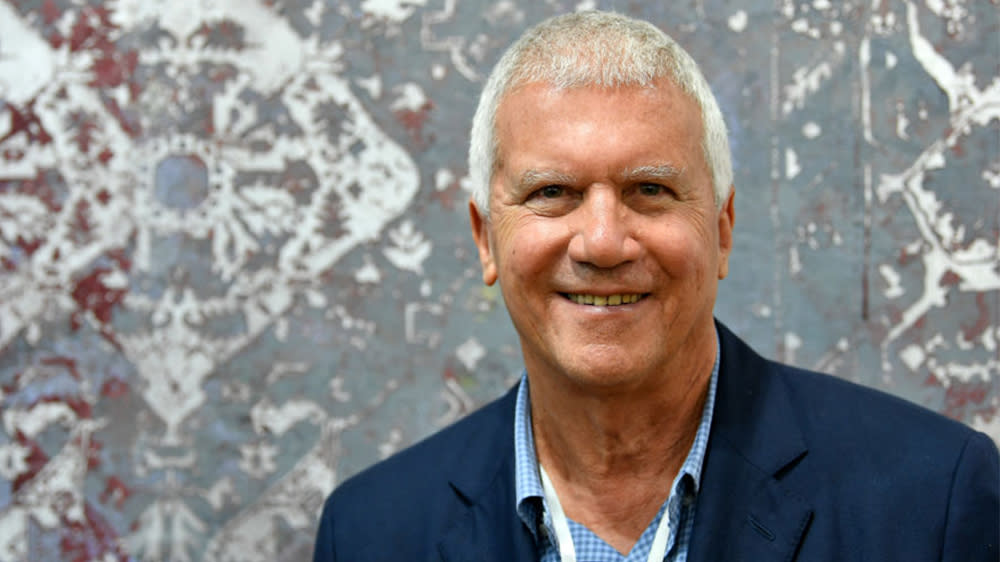Why Larry Gagosian Won’t Sell Art to Oligarchs Anymore

- Oops!Something went wrong.Please try again later.
- Oops!Something went wrong.Please try again later.
Monday marked the publication of an epic New Yorker profile of dealer Larry Gagosian by Patrick Radden Keefe, author of an award-winning book about the opioid crisis and the Sackler family, the people whose company is said to have caused it. Across the profile’s 17,000-plus words, there are many revelations about Gagosian’s moral compass—or, according to some quoted, lack thereof.
At one point, Keefe puts Gagosian’s record of selling to oligarchs under the microscope. Keefe notes that Gagosian’s past clients have included Roman Abramovich, a collector who has been sanctioned in the EU, and notes that, in the 2000s, the mega-gallery made attempts to court others like him, even once mounting an exhibition in a former chocolate factory in Moscow.
Keefe reports that things are very different now. In 2022, after Russia invaded Ukraine, Gagosian reportedly sent an email to gallery staffers that told them “you absolutely cannot sell to a sanctioned person.” That email also said, “You cannot sell to their fake business in Liechtenstein. You cannot jeopardize the gallery to sell to these people.”
Gagosian notes that “everybody” sold to oligarchs back in the 2000s, from other major dealers to auction houses. But what are the limits to Gagosian’s ethics?
Click here to read the full article.
Keefe poses the question to Gagosian, who tells Keefe he probably wouldn’t sell to a “convicted murderer,” but buyers who have what Keefe calls “lesser allegations” levied against them may still be fair game.
“If the money is correct, if the transaction is correct, I’m not going to be a moral judge,” Gagosian told The New Yorker.
Many other anecdotes throughout are offered in an attempt to shed light on how Gagosian conducts his business. There’s a portion about how the gallery’s directors operate. Gagosian reportedly phones them incessantly if he can’t reach them, even contacting their spouses if needed, and that these staffers are viewed as “Larry’s children,” according to an unnamed source who worked at the gallery.
And what of the act of poaching artists from his competitors? Keefe questions Gagosian about this, and is greeted with an answer about the dealer David Zwirner. Zwirner, Gagosian claims, is trying “to burnish his ethics on my hide” by alleging that Gagosian isn’t collegiate. Zwirner has taken artists such as Yayoi Kusama from Gagosian’s roster.
One of the most in-depth anecdotes comes from artist Issy Wood, a young painter who has previously said on the record that Gagosian had attempted to add her to his stable before she declined. Wood provides Keefe with a thorough recounting of how those talks allegedly went down.
She claims that Gagosian visited her studio and bought certain works by her, then put them on view in his New York home. As her market shot up, he offered her an exhibition and reportedly texted her and called her multiple times a day.
According to Wood, she eventually visited his townhouse, where things fell apart after she inquired about the 78-year-old dealer’s succession plan. While she was in the bathroom, mulling how to move forward, he allegedly texted her three times, saying, “The other galleries you are considering will most likely go out of business before my demise.” She ended up joining Michael Werner, which has a reputation for selling blue-chip paintings. (“Why she went sideways like that I have no idea,” Gagosian told the New Yorker.)
Looking back on how her prices rose in tandem with Gagosian’s support of her, Wood tells Keefe, “It was insider trading. It’s an industry with no rules.”
Best of Robb Report

